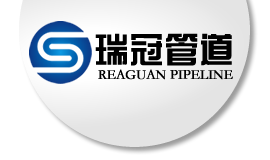Influence of carbon and other elements in steel pipe on steel pipe
Carbon is the most important element in ASTM A53 a 500 Galvanized Steel Pipe. The mechanical strength of steel is directly related to carbon content.
With the increase of carbon content, the yield point and tensile strength increase, and the plasticity and impact properties decrease.
When the carbon content is more than 0.23%, the weldability of steel is poor.
Therefore, in order to obtain better weldability in low alloy steel structure, the carbon content is usually less than 0.2%.
At the same time, the high carbon content also reduces the atmospheric corrosion resistance of the steel, and the high carbon steel is easy to collide in the field.
In addition, carbon can improve the cold brittleness and aging sensitivity of steel.
2. Effect of phosphorus on steel
The role of phosphorus in ASTM A53 a 500 Galvanized Steel Pipe and steel plate is different, and it is also different at different concentrations.
Generally speaking, phosphorus is a harmful element in steel, which will increase the cold brittleness of steel. It deteriorates welding and pending properties and reduces plasticity.
Therefore, the content of phosphorus in steel is usually lower than 0.045%, while the content of phosphorus in high quality steel is relatively low.
In the higher steel grades, the phosphorus content is 0.03-0.05, and in the low alloy high strength steel, the phosphorus content is more than 0.10, which can not only improve the strength, but also improve the corrosion resistance. However, the disadvantage is that even if the strength is increased by P, it will become brittle and the plasticity and toughness will be reduced.
Three. Influence of sulfur in steel pipe
As we all know, sulfur is a harmful element. It increases the hot brittleness, reduces the plasticity and toughness, and leads to cracks in the forging process.
Secondly, sulfur is harmful to welding performance and reduces corrosion resistance. Therefore, the sulfur content is usually required to be less than 0.055%.
For high quality steel, s is required to be less than 0.04%. Adding 0.08-0.2% sulfur can improve the cutting performance of free cutting steel.
So even s is a harmful element. If the content is less than 0.05%, the general application is acceptable
previous_pageImportance and function of steel pipe
next_pageSemimetals and metallic elements in steel
